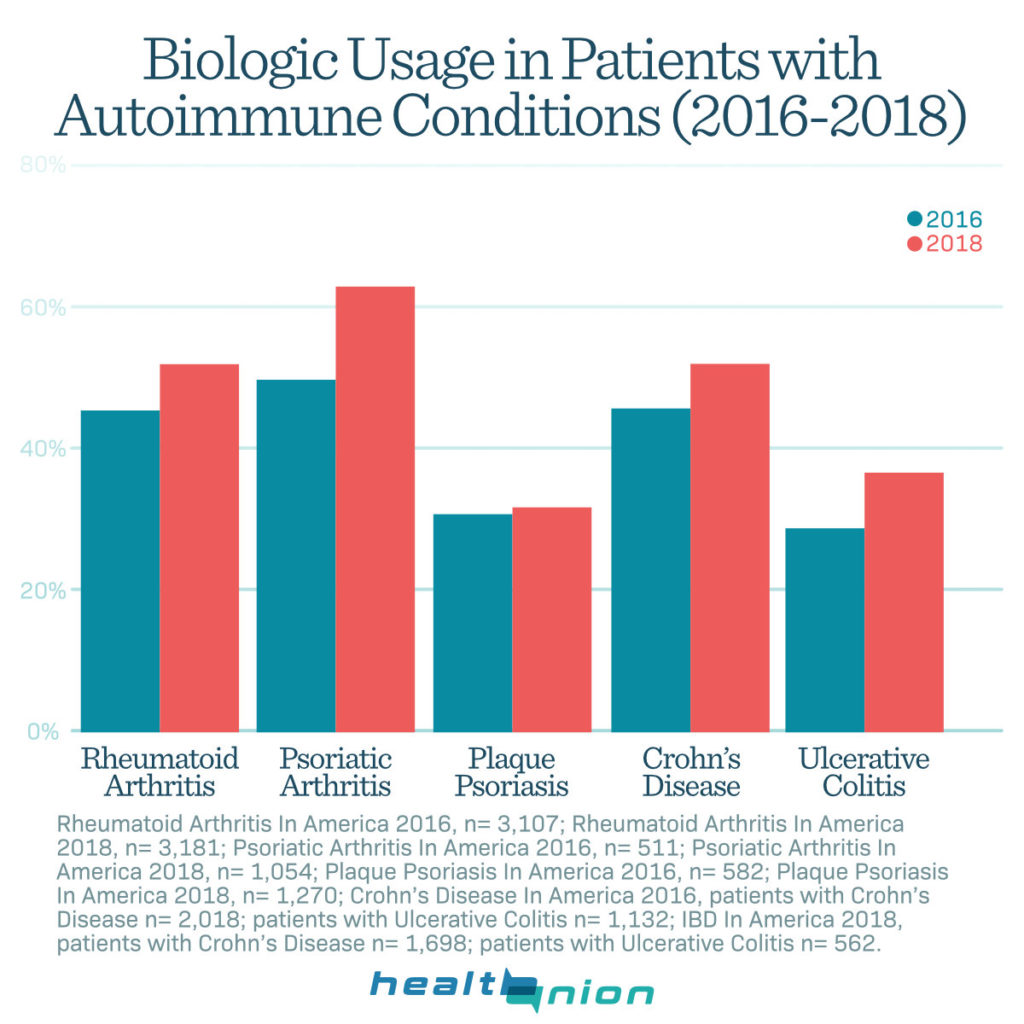The introduction of biologic therapies has revolutionized the treatment of autoimmune conditions, significantly broadening and improving drug treatment options for patients over the last decade. Many people living with autoimmune conditions like rheumatoid arthritis (RA) or inflammatory bowel disease (IBD) tend to express low satisfaction with their treatment plans, and the decision of when to use a biologic to treat their condition is a complex one that depends on several factors, including cost and side effects (RA In America 2018, IBD In America 2018).

In the past two years alone, biologics (including JAKs and small molecule) have become much more widely available, further evolving the treatment landscape for people living with these conditions. Data from Health Union’s annual In America surveys show the increase in biologic usage across several autoimmune conditions just since 2016:

Examining this shift to greater biologic usage uncovers a wide array of benefits for the patient. People currently using a biologic to treat their condition are more likely to report a good relationship with their doctor and cite the highest level of symptom control compared to those who are not currently using a biologic treatment (In America Meta-Analysis: Biologic Experience 2018).
On the other hand, people who are biologic-naive or lapsed biologic users encounter significant personal barriers to bringing a new treatment into their lives. They cite concerns over its efficacy, side effects, and long-term safety. With the amount of information available on treatment options for autoimmune conditions, both current biologic users and biologic-naive patients are not only turning to their doctor as are source, but also relying heavily on condition-specific websites and social media to learn about and manage their condition.
With all of the different ways patients can learn about treatments, does your approach to reaching and engaging people keep pace?
In a time when people have so many treatment options and information sources, it’s increasingly critical for marketers to consider when and how to meet people where they are. Perhaps more importantly, it’s necessary to recognize that in their quest for information, people are often seeking connection with other patients and validation for their experiences. When they find it, the possibilities for what marketers can learn are limitless.
Health Union’s approach to cultivating growing online health communities, through meaningful patient engagement, helps industry partners uncover and address the drivers and barriers to biologics adoption, persistence, and adherence. This approach enables marketers to:
- Integrate qualitative and quantitative insights, to understand people’s wants and needs so you can focus on reaching patients in the right places and at the right moment in time.
- Participate directly in the conversation through custom media opportunities–enabling you to efficiently attract and engage the right audiences.
- Participate indirectly by targeting media placements around content that’s most relevant to the patient, ensuring a broad reach beyond social and community platforms.
For more information on how Health Union can help you create smarter, more effective programs for patients and caregivers, visit us at www.health-union.com.
David Shronk, senior vice president of media, Health Union







